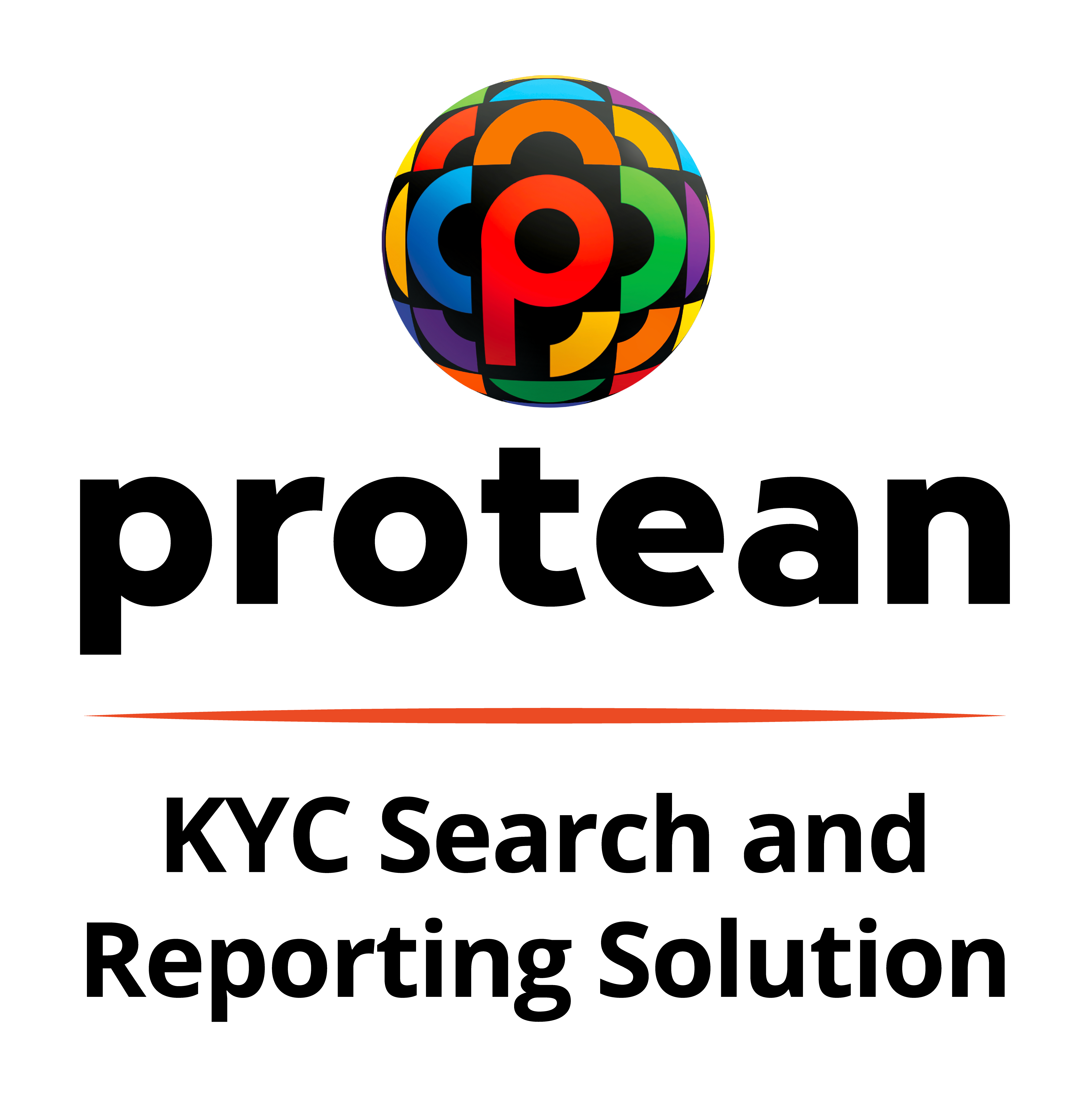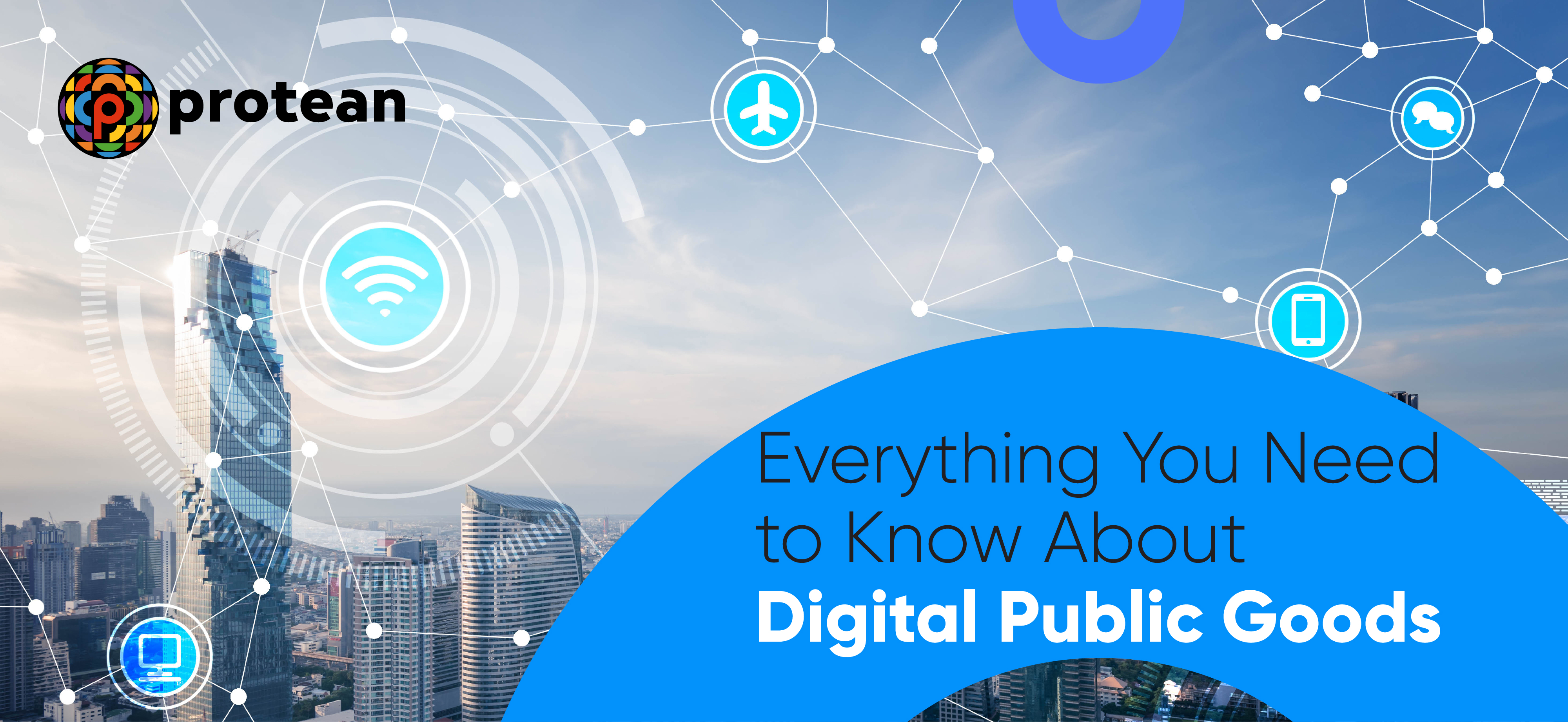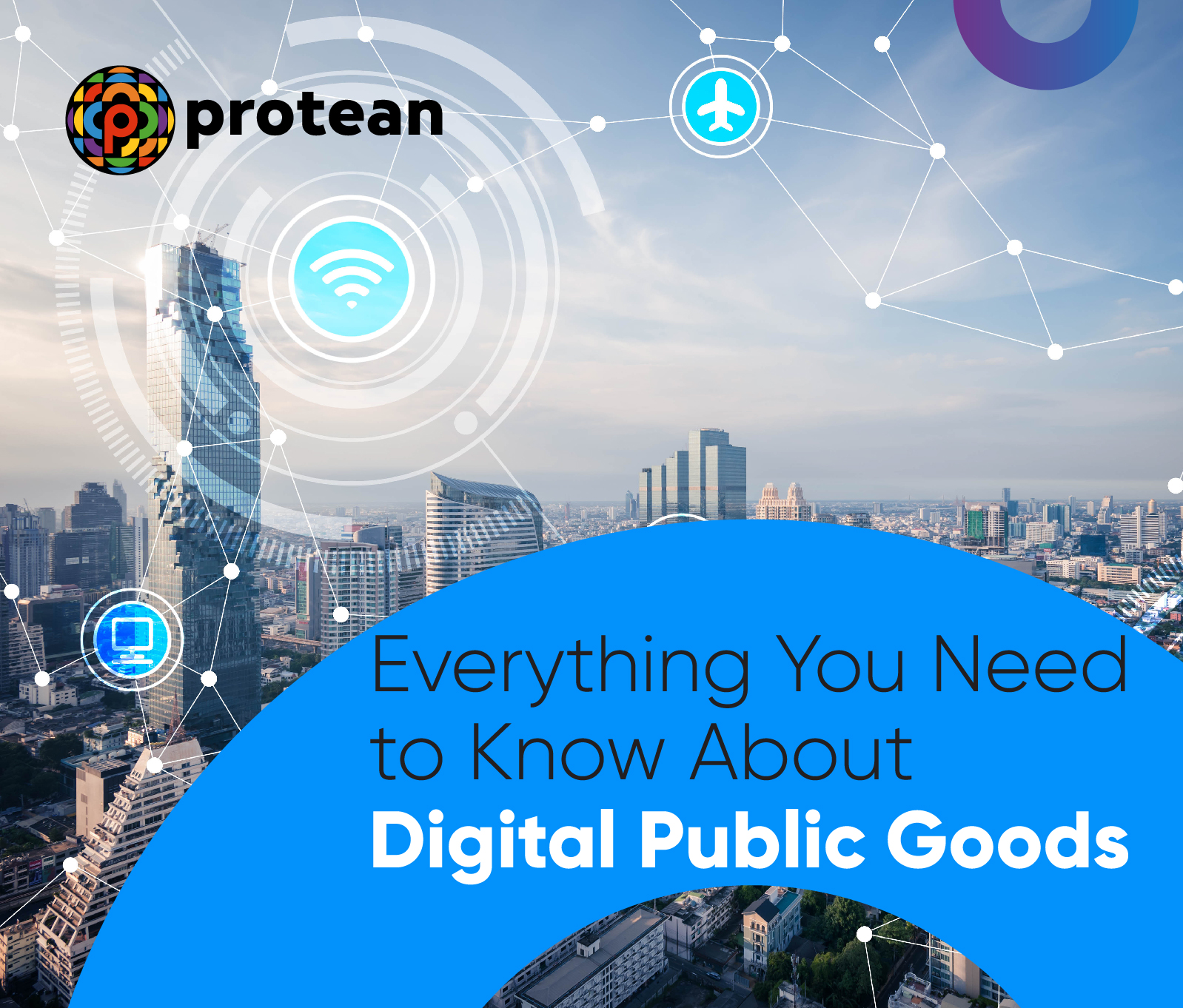India has proved its digital expertise by developing Digital Public Goods (DPG) such as the digital identity system "Aadhaar," as well as several DPGs built on top of Aadhaar and the "Unified Payments Interface" commonly known as UPI. Aadhaar has emerged as a critical component in India's public service delivery architecture. UPI has changed the way payments are made. With the help of 1.2 billion wireless connections and 800 million internet users, India's digital public infrastructure is attempting to reach every single citizen.
What are Digital Public Goods?
Digital Public Goods (DPGs) are new and improved methods of delivering public goods (and services) such as the Aadhaar identity system, healthcare, government schemes, and other digital public infrastructure such as banking and payments. They are a type of shared infrastructure made possible by the use of open software, data, content, and protocols.
Stacks, the foundation of Digital Public Goods, are made up of four primary layers.
Among them are:
- An identity layer that connects personal records to an online identity.
- A data register that serves as a single point of contact for both personal and institutional data, increasing compatibility among all stakeholders.
- Data exchange enables the secure sharing of data between systems, hence improving service delivery, innovation, and tailored solutions.
- An interface that enables applications to communicate with one another via open APIs or software intermediates, as well as third parties to develop end-user solutions on the stack.
The digital public good model holds tremendous promise towards achieving the objectives of Digital India, a revolutionary programme aiming at harnessing technology for inclusive growth & development. This includes but is not limited to — open-source software, data repositories, digital infrastructure for computation, education, scientific research, culture and much more.
From a Digital India perspective, these also facilitate innovation, help close the digital divide with more inclusive access to services and improve service delivery across multiple industries. Open-source software like Aadhar & UPI has changed the rules of identification and payment respectively, and now has allowed financial inclusion for millions.
How Do Digital Public Goods Work?
Digital public goods (DPGs) work like digital treasures available for everyone to use and enjoy. Think about a big book library — except instead of books, it is packed with digital objects like software, datasets, and useful resources. These belongings are particular in that they’re priceless and available for all to utilise.
Here is how they work:
Open to All: Like a giant neighbourhood picnic, DPGs are for anyone and everyone. They are free for all — students, educators, researchers, and anyone else who wants to use it.
Free to Use: DPGs are free, or rather no one has a valid answer as to why you cannot get them for free. This is positive — everyone regardless of wealth can benefit from the services.
No Ownership Issues: In contrast to "toys", no one person can stake a claim on a "DPG" and proclaim "This is my "toy", no you cannot play with this". DPGs are more like a public park where we can all gather to have fun. It is not that someone would come at you and say “You cannot do this.”
Always Available: DPGs are like a 24/7 convenience store. They are instantly available whenever and wherever you want them — as long as you have an internet connection.
Helping Everyone: From tracing disease with a doctor, helping a student with something new, to building awesome products with a business — they can do all that!
Growing and Improving: DPGs are always getting better. And just as a plant evolves, folks keep introducing new features, patching holes, and polishing them for greater efficacy.
So in short, that is what we mean when we think of Digital Public Goods—open, free for all. People are brought together with a common goal of making things better in the digital space through collaboration and sharing knowledge. And so in this way, whether you want to know something or you want to make something or you are trying to fix something, DPGs are there for you, always ready to extend a helping hand like a good friend next door.
What was the reason behind the government introducing Digital Public Goods?
The ambition behind the Government’s push towards provisioning public goods in digital form—often referred to as DPGs, is deeply linked with the idea of delivering on social goals, and seeding new enterprise opportunities.
Here are the compelling reasons behind the government's motive for introducing DPGs:
1. Inclusivity and Accessibility
The government created DPGs so that critical digital resources are available to all citizens — closing the digital divide. Flexible e-Gov provides governments the ability to react promptly to citizens’ specific needs, providing equality of access.
2. Efficiency and Transparency
India’s model initiatives like Aadhaar and UPI built on the Data Empowerment Protection Architecture (DEPA) exemplify the Indian Government's dedication towards good governance through seamless service delivery. These programs fit perfectly into the protean ideals of e-government that promote adaptability between administrative units, flexibility among staff, openness, and greater service delivery efficiency or user convenience.
3. Innovation Catalyst
Open API-based digital infrastructure, known as India Stack, has revolutionised India’s digital play field. This innovation centre that gave birth to projects such as Aadhaar and UPI shows the strength of India in enabling innovations at the industrial scale.
4. Healthcare Advancement
The concept of DPGs could potentially change the face of health care as portrayed in the envisioned national health stack that uses India Stack. By linking to national health electronic registries and other components, it promises to enhance healthcare access, data analytics, and overall health outcomes.
5. Global Impact
These are innovative solutions that have been successfully implemented in their domestic areas, giving the ability to replicate these solutions / frameworks for adaptation in international use cases as well, like the Indian DPGs CoWIN / eSanjeevani /Aarogya Setu.
What are the Benefits of Digital Public Goods?
The benefits DPGs bring include:
1. Cheaper and More Efficient Use
An entire nation's physical infrastructure can be supplemented for less money than it would cost to build two kilometres of top-notch roads by developing an open source-based high school online educational infrastructure.
In comparison, there is no danger of falling into a debt trap, and the expenditures needed to convey digital public goods are small. The platform's code is also quite reusable.
2. Immediately Visible Results
In contrast to physical infrastructure like docks and roads, digital public goods have short periods of development and quick, observable effects and benefits.
Processes are streamlined, and wait times for any service are significantly reduced. Passports, PAN cards, and driving licences are other examples. People now can apply for PAN, authenticate Aadhaar and more through Protean with just a few clicks.
3. Plugs Leaks
Leaks are sealed via digital infrastructure. Removing ghost recipients of services provided by the government, promoting rent collection, providing an audit trail, clearly connecting the individual-government-market link, and delivering efficiencies that aid in quick investment recovery are all features of this system.
Productivity increases, and services may be expanded quickly. Benefits may be rapidly increased to reach a much bigger proportion of the population.
What are the Challenges of Digital Public Goods in India?
India has been facing numerous hurdles as it is trying to build, expand, and sustain its DPIs and DPGs. The potential of DPGs can only be realised if we overcome the constraints of a fragmented digital industry, achieve legislative harmonisation, address data privacy and unequal access, fix system interoperability issues, and develop solid governance frameworks.
These are some challenges of DPGs:
1. Privacy Concerns with Digital Public Goods
A major concern with such digital projects is the potential for privacy abuses and data weaponisation.
2. Inequalities are Growing
Many underlying factors influence success in the digital supply of services, including education, digital literacy, and access to dependable and fast telecommunications connections.
In this scenario, digitising services on a large scale without addressing these digital divides risks increasing existing imbalances.
3. Concerns about Security
The cybersecurity challenge is providing end-to-end data protection across the entire ecosystem.
While the Government's storage routes, transmission and databases are typically secure, other participants in the ecosystem may lack the requisite expertise or security to prevent and respond to breaches.
4. Unserved Rural Locations
Because digital services are rarely distributed equally, communities in rural areas frequently require on-the-ground personnel to deploy and enhance digital technologies.
Takeaway
Digital public goods are the foundation of a just and innovative digital world. They are the tools and resources that we can all utilise for free to make technology work for everyone.
We are not just avoiding spinning the wheel by supporting digital public goods. We are also laying a stronger platform for advancement. Community involvement and strong governance are required to ensure that these resources serve our communal needs while respecting privacy.
FAQs
1. Can DPGs be utilised for business purposes?
While DPGs are normally free to the public, some may include licencing terms that limit commercial use. To understand any limitations, it is critical to read the terms and conditions for each DPG.
2. What role does open-source play in DPGs?
DPGs frequently use open-source concepts. This means that the source code or underlying technology can be inspected, modified, and collaborated on.
3. Who creates and maintains DPGs?
Individuals, organisations, governments, and collaborative communities can develop and maintain DPGs. The important thing is that they are made available to the public.
4. What is the distinction between UPI and digital payments?
While UPI is a decentralised peer-to-peer payment system that allows for real-time transactions between banks, the digital rupee serves as the digital counterpart to the national currency, which is created and regulated by the central bank.
5. Is digital payment a public good?
To the G20 Finance Ministers, the Prime Minister hailed the digital payment ecosystem as a free public utility that has radically revolutionised governance, financial inclusion, and ease of living in India.


